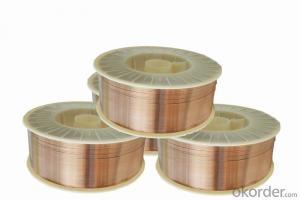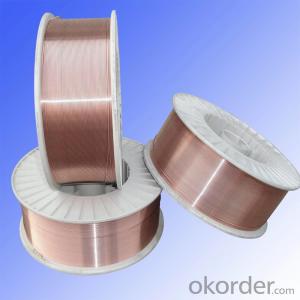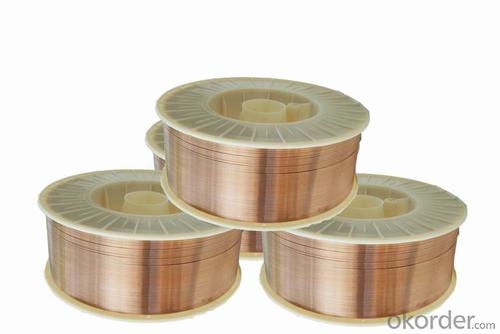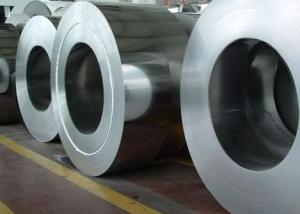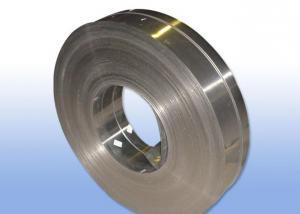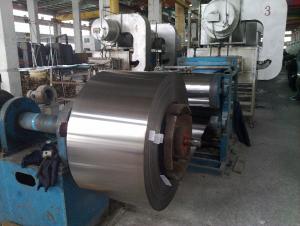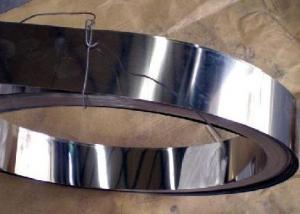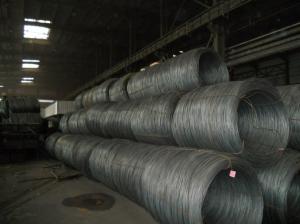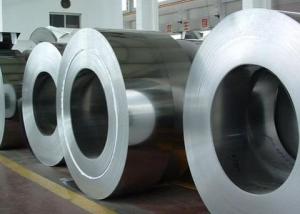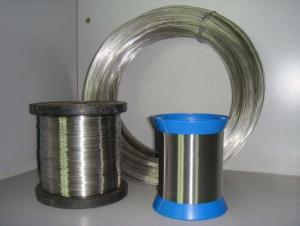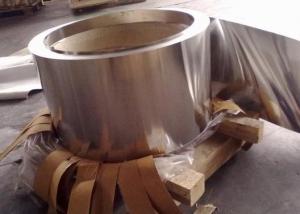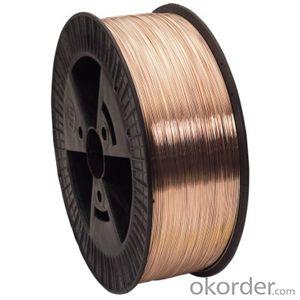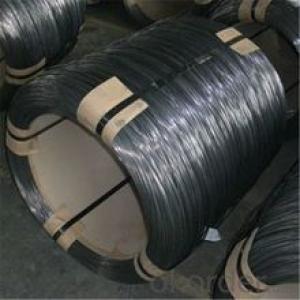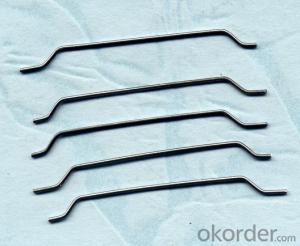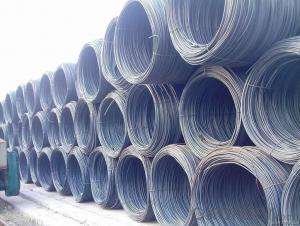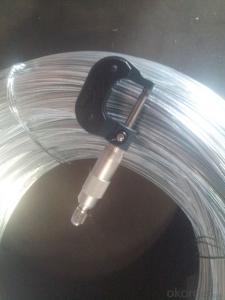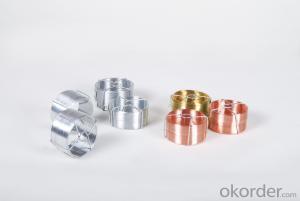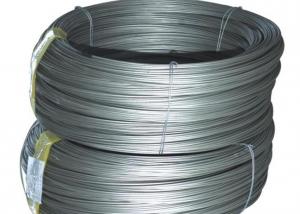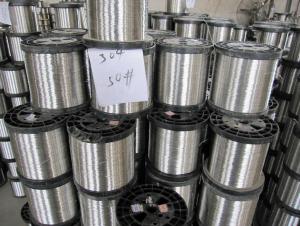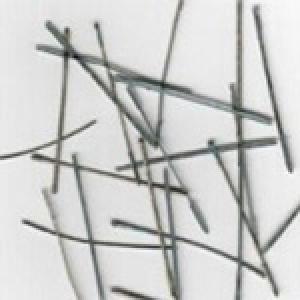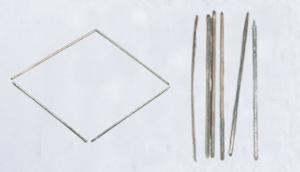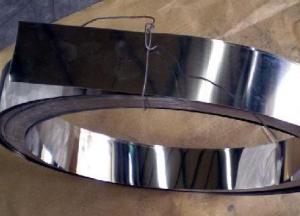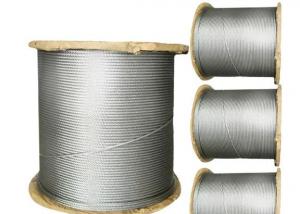Brass Steel Welding Wire/ Strip for Construction
- Loading Port:
- Qingdao
- Payment Terms:
- TT or LC
- Min Order Qty:
- 10 m.t.
- Supply Capability:
- 1000 m.t./month
OKorder Service Pledge
OKorder Financial Service
You Might Also Like
Brass Steel Welding Wire/ Strip for Construction
Main Structure for Brass Steel Welding Wire/Strip
AWS A5.18 ER70S-6
1) Copper coated
2) All position welding
3) Shield gas : CO2
4)Material: Carbon Steel
5)Diameter: 0.8mm-1.6mm
6)Weight: 15kg/spool, 100kg/barrel, 250kg/barrel
7)Flux Content: Without flux
8)Shield GAS: CO2
ER70S-6 is a coppered low alloy steel wire with all position welding.The wire has a very good welding performance and the weld metal shows lower temperature impact toughness. It is mainly for butt and fillet welding structures made by shipping steel and low alloy steel, such as ships , containers, as well as vehicles,engineering and construction machineries, bridges etc.
Datas of Brass Steel Welding Wire/ Strip for Construction:
C | Mn | Si | S | P | Ni | Cr | Mo | V | Cu | |
Standard | 0.06-0.15 | 1.40-1.85 | 0.80-1.15 | ≤0.035 | ≤0.025 | ≤0.15 | ≤0.15 | ≤0.15 | ≤0.03 | ≤0.50 |
Typical | 0.078 | 1.53 | 0.85 | 0.01 | 0.011 | 0.029 | 0.022 | 0.008 | 0.010 | 0.12 |
All products of welding wire were produced by German equipment.
Advanced technologies with advanced equipment.
Main Features for Brass Steel Welding Wire/ Strip for Construction:
Gas-shielded welding wires utilize Co2,argon-rich gas and argon gas as the shielding gases with high production efficiency.Large current may be used during welding to achieve droplet transfer,wiht large melting coefficient of wire, excellent depth of welding penetration on material, little melting residues,high-density current, concentrated heat, small heating area, little distortion of work pieces after welding, etc.
Because of low content of hydrogen in the seam,cold cracking is rare. Good visibility of electric arc facilitates full-position welding and welding at other positions.
Main Applications for Brass Steel Welding Wire/ Strip for Construction:
Welding of various 500Mpa structural steel components;welding of various 500Mpa plates and pipes;full-position welding with a wide range of current.
FAQ:
Why Should You Choose Us?
One-stop purchase service with full set of production line to save your time, cost and energy
Competitive price,Superior quality, Excellent logsitics and Strong finance ability
Professional service team
Picture:
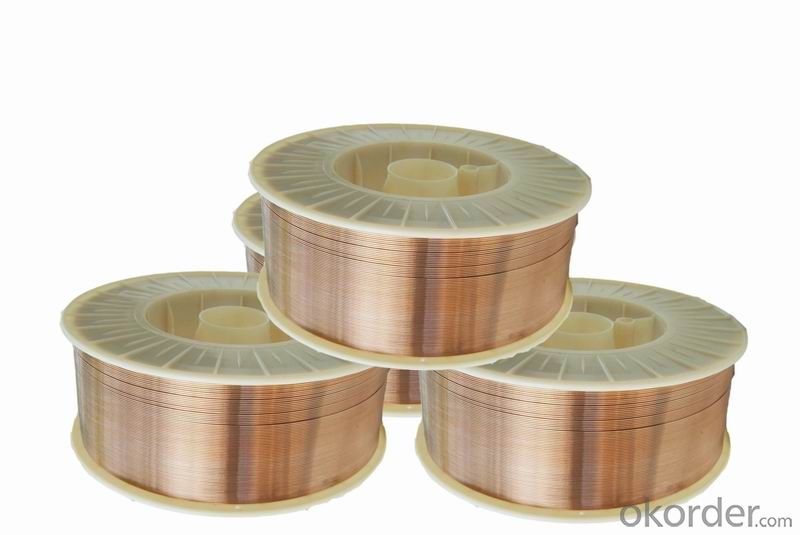
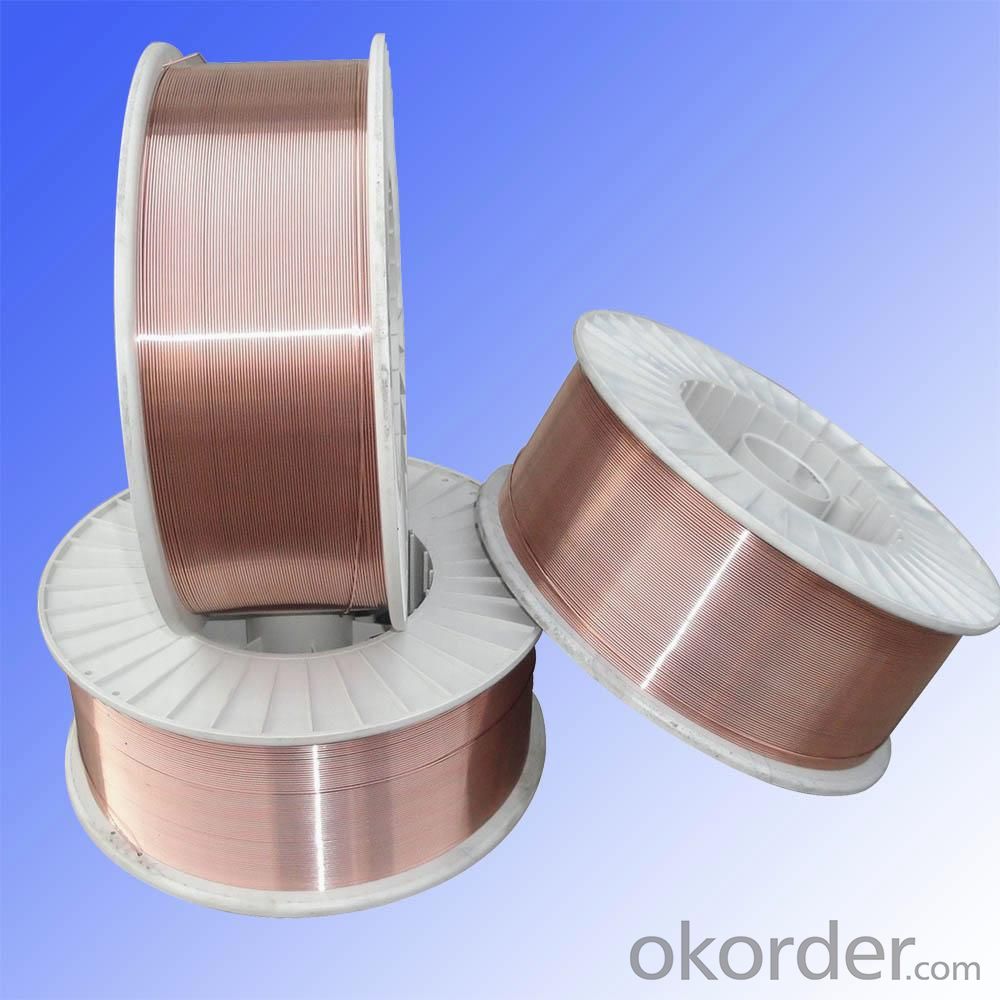
- Q: How strong is stainless steel wire?
- Known for its exceptional strength and durability, stainless steel wire is a material highly praised for its versatility. It possesses the ability to endure high levels of tension and pressure without succumbing to breakage or deformation. The specific alloy used determines the strength of stainless steel wire, yet it is generally regarded as one of the most robust wire types available. This strength is a direct result of stainless steel's properties, which include its high tensile strength, corrosion resistance, and unwavering structural integrity even in the most extreme conditions. Consequently, stainless steel wire finds extensive application across a range of industries, such as construction, automotive, aerospace, and marine, where strength and reliability are paramount.
- Q: What are the different wire packaging options available for stainless steel wire?
- Customers have a variety of packaging options to choose from when it comes to stainless steel wire, depending on their specific needs and preferences. Some commonly used packaging options include: 1. Spools: Stainless steel wire is often packaged on cylindrical spools, which provide a neat and organized storage solution. Spools come in different sizes and can accommodate various lengths and diameters of wire. They are designed for easy dispensing and can be used for both manual and automated wire feeding. 2. Coils: Coiling is another popular packaging choice for stainless steel wire. Coils are typically larger in size compared to spools and are wound in a circular shape. They are commonly used for heavy-duty applications or when longer lengths of wire are required. Coils can be easily unwound and straightened for use. 3. Reels: Similar to spools, reels are larger in size and can hold a higher quantity of stainless steel wire. They are commonly used in industrial applications where large volumes of wire are needed. Reels provide convenient storage and transportation, ensuring the wire remains well-protected and free from tangling or damage. 4. Cut lengths: Another packaging option is to have the stainless steel wire pre-cut into specified lengths according to the customer's requirements. This is particularly useful when precise and consistent lengths of wire are needed for specific applications. Cut lengths are often bundled or packaged in boxes or bags for easy handling and storage. 5. Pallets: For bulk orders or large-scale projects, stainless steel wire can be packaged on pallets. Pallets are platforms made of wood or plastic that securely hold multiple spools, coils, or reels of wire. This packaging option is ideal for transportation and storage, allowing for easy loading and unloading using forklifts or pallet jacks. Ultimately, the choice of packaging option for stainless steel wire depends on factors such as desired length, quantity, application requirements, and ease of handling. It is crucial to select the appropriate packaging option to ensure the wire remains in good condition and is easily accessible for use.
- Q: Can stainless steel wire be soldered or welded?
- Yes, stainless steel wire can be both soldered and welded. Soldering stainless steel wire involves using a soldering iron and a suitable soldering flux, which helps the solder adhere to the metal. However, it is important to note that stainless steel has a high melting point, so a higher temperature soldering iron or torch may be required. Welding stainless steel wire is another viable option. It can be welded using various methods such as TIG (Tungsten Inert Gas) welding, MIG (Metal Inert Gas) welding, or spot welding. These methods involve melting the stainless steel wire and adding a filler material to create a strong bond. Both soldering and welding stainless steel wire require expertise and proper equipment. It is crucial to follow safety precautions and utilize the appropriate techniques to achieve a successful and durable joint.
- Q: What are the disadvantages of using stainless steel wire?
- There are a few disadvantages of using stainless steel wire that should be taken into consideration. Firstly, stainless steel wire can be quite expensive compared to other types of wire. This can be a disadvantage for those on a tight budget or those who need large quantities of wire for their projects. Secondly, stainless steel wire has a higher electrical resistance compared to other metals. This means that it may not be the best choice for applications that require low resistance, such as electrical circuits. Additionally, stainless steel wire can be more difficult to work with compared to other types of wire. It is known to be harder and less malleable, which can make it challenging to bend or shape as desired. This can be a disadvantage for those who require intricate or complex wire designs. Moreover, stainless steel wire may not be suitable for certain environments or applications. It is prone to corrosion when exposed to certain chemicals or environments with high acidity. In such cases, alternative materials may be more appropriate to ensure the wire's longevity and functionality. Lastly, stainless steel wire is not as strong as some other types of wire, such as steel or titanium. This means it may not be suitable for applications that require high tensile strength or load-bearing capabilities. Overall, while stainless steel wire has many advantages, it is important to consider these disadvantages and assess whether they align with the specific requirements of your project before choosing to use it.
- Q: What are the different types of stainless steel wire electrodes?
- There are several different types of stainless steel wire electrodes that are commonly used in various welding applications. The specific type of stainless steel wire electrode to be used depends on the desired welding characteristics and the intended application. One of the most commonly used types is the ER308L stainless steel wire electrode. This electrode is designed for welding 18% chromium - 8% nickel stainless steels, such as types 301, 302, 304, and 305. It provides excellent resistance to corrosion and is suitable for welding similar or dissimilar stainless steels. Another popular type is the ER309L stainless steel wire electrode. This electrode is specifically designed for welding 300 series stainless steels to carbon or low alloy steels. It provides high strength and good resistance to cracking, making it suitable for applications where joining dissimilar metals is required. For applications involving high-temperature environments, the ER310 stainless steel wire electrode is commonly used. This electrode is designed for welding heat-resistant stainless steels such as types 310, 314, and 446. It offers excellent resistance to scaling and oxidation at elevated temperatures. In addition to the above, there are also stainless steel wire electrodes available for specialized applications. For example, the ER316L stainless steel wire electrode is specifically designed for welding molybdenum-bearing austenitic stainless steels, such as type 316. It provides superior corrosion resistance and is often used in the chemical and petrochemical industries. Overall, the different types of stainless steel wire electrodes offer a range of characteristics and properties that make them suitable for various welding applications. It is important to select the appropriate electrode based on the specific requirements of the project to ensure optimal results.
- Q: Can stainless steel wire be used for woven wire cloth?
- Indeed, woven wire cloth can utilize stainless steel wire. Due to its impressive endurance, ability to resist corrosion, and remarkable tensile strength, stainless steel wire is frequently employed in the manufacturing of woven wire cloth. This material proves highly suitable for applications necessitating a robust and enduring wire cloth, including filtration, sieving, and separation procedures. The adaptability of stainless steel wire allows it to be woven into an assortment of mesh sizes and patterns tailored to precise specifications, rendering it an exceptionally versatile option for a wide range of industrial and commercial uses.
- Q: Can stainless steel wire be used for hanging signs or banners?
- Yes, stainless steel wire can be used for hanging signs or banners. Stainless steel is known for its strength, durability, and resistance to corrosion, making it a suitable choice for outdoor applications. It can provide reliable support and withstand various weather conditions, ensuring the longevity of the signs or banners.
- Q: Can stainless steel wire be used for wire rope fittings?
- Yes, stainless steel wire can be used for wire rope fittings. Stainless steel is a popular material choice for wire rope fittings due to its corrosion resistance, strength, and durability. It is commonly used in marine, architectural, and industrial applications where the fittings are exposed to harsh environments or require high strength. Stainless steel wire rope fittings provide excellent resistance to rust, corrosion, and staining, making them suitable for outdoor use and in applications where the fittings may come into contact with moisture or chemicals. Additionally, stainless steel wire rope fittings are available in several grades, such as 304 and 316, which offer varying levels of corrosion resistance and strength to suit different requirements.
- Q: Can stainless steel wire be used for medical applications?
- Yes, stainless steel wire can be used for medical applications. Stainless steel wire is known for its strength, durability, and resistance to corrosion, making it suitable for various medical uses. It is commonly used in surgical instruments, orthopedic implants, medical device components, and dental applications. Stainless steel wire can be easily sterilized, ensuring the safety and hygiene of medical procedures. Additionally, it is biocompatible, meaning it is well-tolerated by the human body and does not cause any adverse reactions. Overall, stainless steel wire is a reliable and versatile material that meets the stringent requirements of medical applications.
- Q: What are the different types of finishes available for stainless steel wire?
- There are several types of finishes available for stainless steel wire, including: 1. Bright finish: Also known as a mill finish, it is the most basic type with a smooth and shiny surface. 2. Brushed finish: This finish is achieved by brushing the wire with an abrasive material, resulting in a textured appearance. 3. Mirror finish: It involves polishing the wire to a highly reflective surface, resembling a mirror. 4. Satin finish: This finish has a smooth and slightly reflective surface, providing a subtle sheen. 5. Coated finish: Stainless steel wire can be coated with various materials such as PVC or nylon to enhance durability or to provide insulation. These finishes serve different purposes and can be chosen based on the desired aesthetic, functionality, and application requirements.
Send your message to us
Brass Steel Welding Wire/ Strip for Construction
- Loading Port:
- Qingdao
- Payment Terms:
- TT or LC
- Min Order Qty:
- 10 m.t.
- Supply Capability:
- 1000 m.t./month
OKorder Service Pledge
OKorder Financial Service
Similar products
Hot products
Hot Searches
Related keywords
